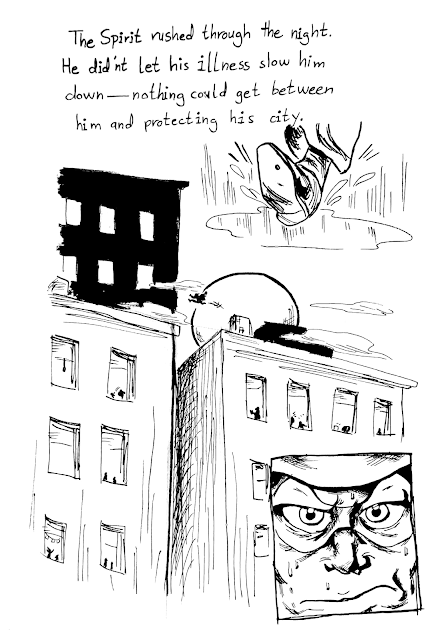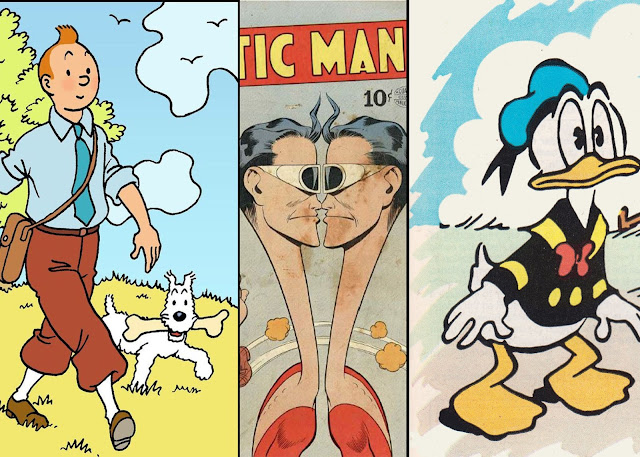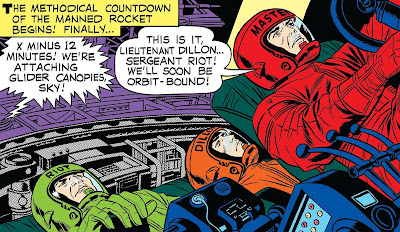Week 5- The Emergence of the Graphic Novel- Cartoonist's Track

One of the primary techniques I appropriated from Eisner in this page was the openness of his pages. I remember reading a quote somehwere (it may have been in Understanding Comics ) from Eisner saying he wanted to escape the confines of the panel, and I found that interesting. This is very evident in his Contract With God trilogy. Many of his pages don't even have traditional panels, instead opting to have images without borders. Eisner didn't feel the need to fill up the whole page if it wasn't necessary, and this sometimes results in his pages feeling almost like illustrations for a novel. This is especially true when he has narration and no speech balloons on a page (something else I emulated here). I also wanted to incorporate his art style. While not a one to one imitation, I did attempt to emulate his use of crosshatching and approach to line. I threw in a closeup of a face since I wanted to take a crack at drawing an Eisner face. His characters are detailed but al



